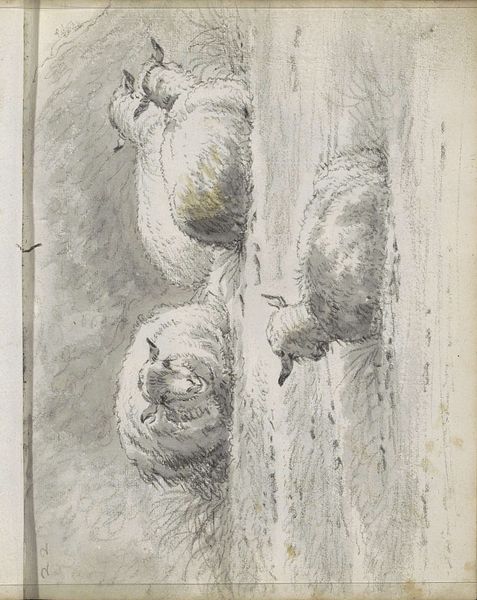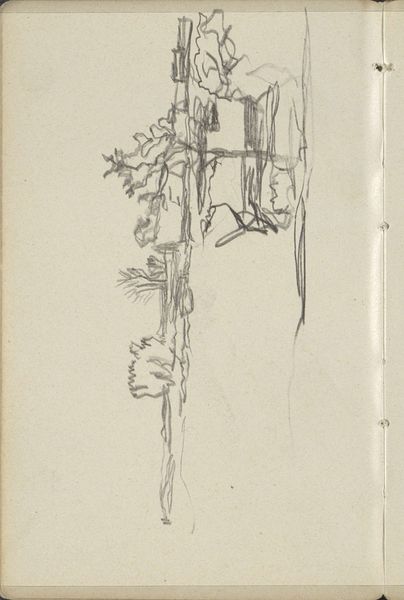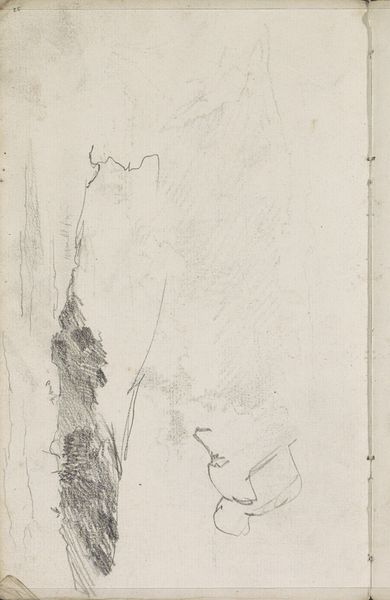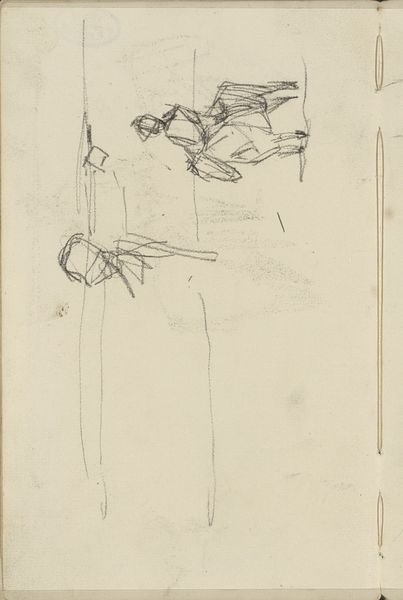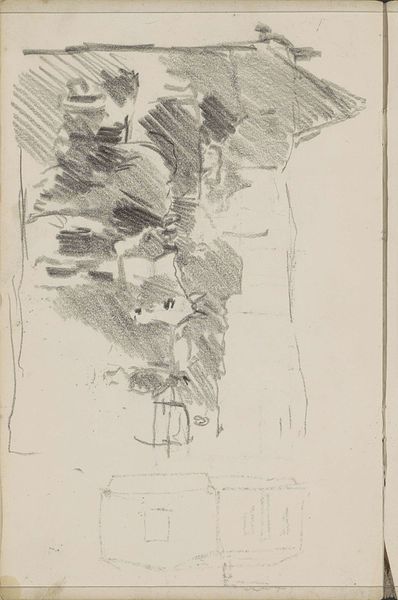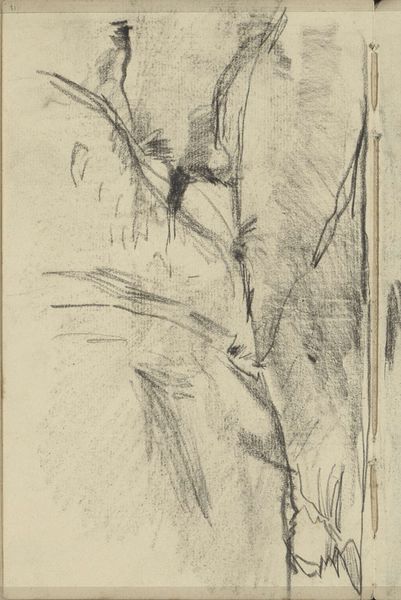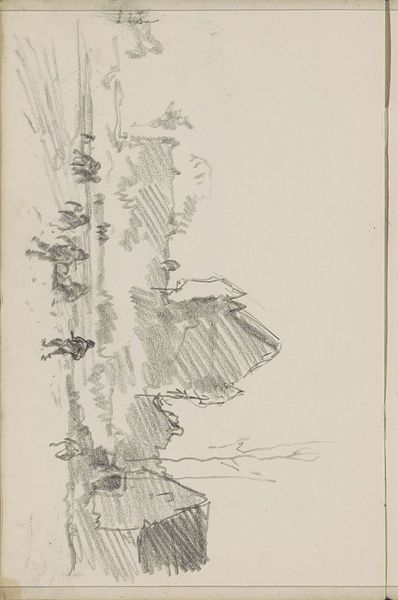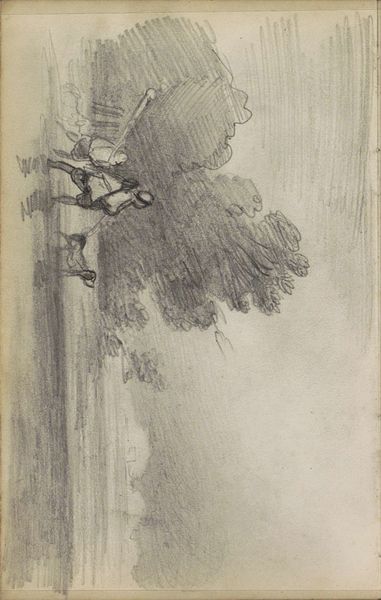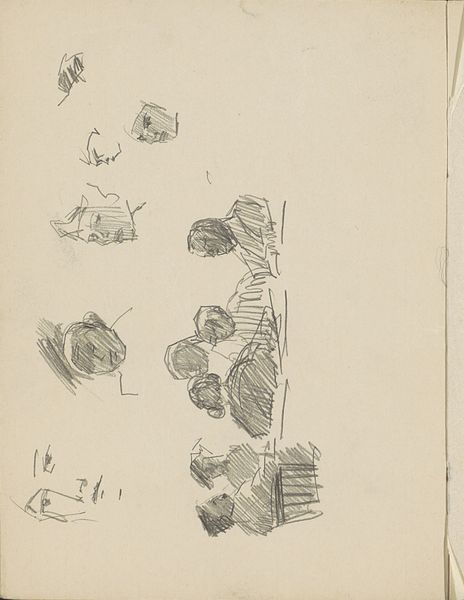
drawing, pencil, graphite
#
drawing
#
impressionism
#
pencil sketch
#
landscape
#
pencil
#
graphite
#
realism
Copyright: Rijks Museum: Open Domain
Curator: I'm really drawn into this sketch by George Hendrik Breitner. It's titled "Duinlandschap," or "Dune Landscape," created sometime between 1880 and 1882. Editor: Ah, yes. The skeletal structure of sand dunes in pencil. It looks…fragile. And ephemeral. Like a fleeting thought jotted down before the wind whisks it away. Curator: Absolutely. Breitner’s known for his gritty cityscapes, and while this predates his more famous Amsterdam views, you see the same quick, almost impatient line work. The scene, almost a ghost of a place. He captures that sense of constant shifting. Editor: It's interesting to consider that Breitner, an artist associated with realism, is capturing not the solid earth, but a transient landscape. We often perceive landscapes as a serene escape from societal turmoil, however, it feels as though Breitner here suggests its very precarity. A visual metaphor for the instability of the era, perhaps? Curator: I like that interpretation. And think about how innovative his drawing style was in the Netherlands at that time! There’s very little smoothing or softening. Just the essence. Imagine what it was like when viewers used to see only polished landscape paintings! He almost paints more about how that landscape felt like rather than the precision you may have got at that period. Editor: Precisely. Looking at his choice of graphite and pencil medium is also key to my interpretation of his message of temporality and realism. Consider what political and social movements and revolts took place that impacted the art scene back in the days, a time when technological advances brought constant shift and uncertainty into people’s lives, like our lives now with technologies such as Artificial Intelligence. He chooses such media which are so tangible, but can easily be blurred, shaded and smudged on the surface, resembling our human impact on the surface of our environment. It does echo much in my soul! Curator: You’re absolutely right. And I feel like this makes us more mindful about what is there to learn and think about such landscape which are so temporal that we ought to rethink about it! What I find equally important is its scale and composition. It almost forces the viewer to examine the overlooked details of an everyday life. How it allows us to meditate on a deeper level by looking at its roughness through lines. Editor: So, there you have it: what seems at first glance a simple sketch, reveals layers of meaning about impermanence, observation, and social context. I guess both of us could not ask for more.
Comments
No comments
Be the first to comment and join the conversation on the ultimate creative platform.
